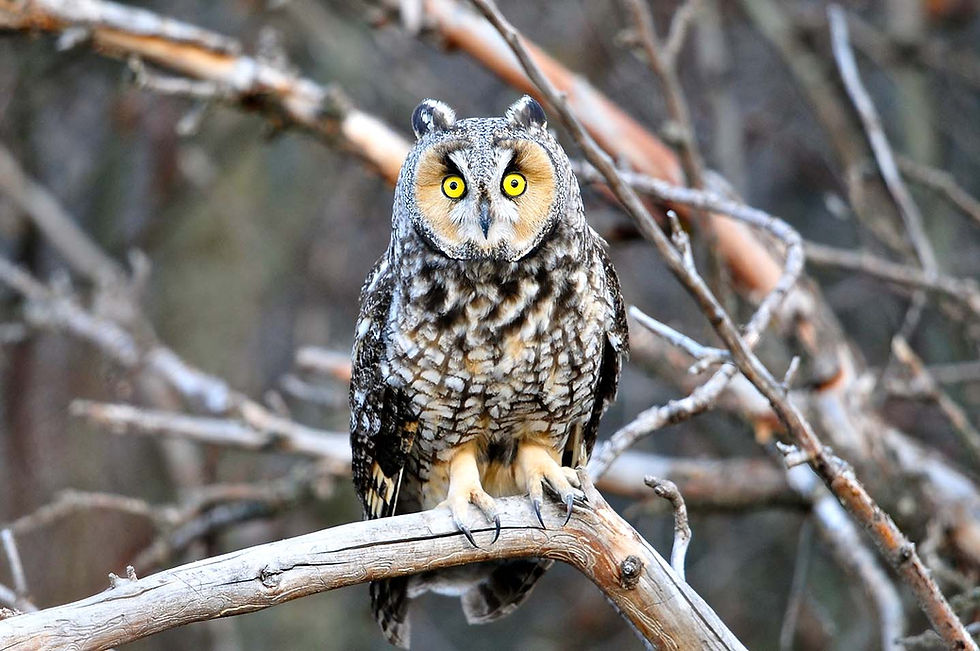Long-eared Owl Roost Cam is streaming LIVE again!

Hooray! Our Long-eared Owl roost cam is up and running again! It’s one of our favorites; after all, 32-years ago Denver’s study of Long-eared Owls began with the research question “Are communal roosts comprised of family groups, other related individuals, or non-related individuals?” This cam is the perfect compliment to our on-going research and provides unprecedented views of this unique roosting behavior. Thank you, explore.org!
Long-eared Owls are one of the few owl species in the world who roost communally. Clustering in groups of 2 to 20 individuals, these roosts occur during the non-breeding season - the fall and winter. Communal roosts of up to 100 individuals have been reported, although we have never seen numbers like this in our study areas. Last year’s cam filmed as many as 13 birds in this roost. We have learned that these groups are made-up of different sexes and ages, although rarely comprise members of the same family.
Generally, the research year is divided into three seasons: breeding, migration, and wintering. Right now we are in the migration season and transitioning into the wintering season. By the end of October the Long-eared Owls will be, for the most part, settled into their winter roosts. So while we’re only seeing a couple of owls right now, it’s likely that more will join them over the next several weeks. Ultimately, however, it comes down to food supply in the area. The diet of these nocturnal hunters is mostly comprised of small mammals, such as voles and mice, and occasionally birds. If the small mammal population cannot support the roost, they will move on to different areas.
So why do Long-eared Owls form these communal roosts? There are several potential reasons. One, grouping together may have thermal advantages during the frigid winter months. Two, it may be a defense against predators – the more eyes on the lookout, the better. And, three, it seems to have social implications for mating: birds from winter roosts turn into the local breeding population. Long-eared Owls are seasonally monogamous but life-long polygamous.
Check out the cam HERE >> You may not see any owls today, but check back regularly - things are constantly changing on these live cams!


































